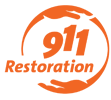As the days grow shorter and the nights longer, we are reminded that the end of Daylight Savings Time is just around the corner. While many of us look forward to that extra hour of sleep, it’s also a crucial time to consider some important home maintenance tasks to ensure your property remains safe and sound. In this article, we will explore the relationship between the end of Daylight Savings Time and water damage risks, and provide you with 3-5 essential steps to protect your home from potential water damage.
Understanding the Connection: Daylight Savings Time and Water Damage
What does changing the clocks have to do with water damage? Well, the end of Daylight Savings Time marks a shift in weather patterns and daylight availability, which can significantly impact your home’s susceptibility to water damage. In this article, we’ll cover information about water damage and the connection between Daylight Savings Time and protecting your home for the season.
Shorter Days and Longer Nights
With less daylight, it can be challenging to spot water leaks or damage in your home. Cracks in your roof, faulty pipes, or leaks in your basement are more likely to go unnoticed during the extended nighttime hours.
As the end of Daylight Savings Time ushers in shorter days and longer nights, it introduces a set of challenges for homeowners that extend beyond simply adjusting the clocks. The diminishing daylight hours can significantly impact your ability to detect and address potential water damage issues within your home. Here’s a closer look at why this transition can make spotting water leaks or damage more challenging.
The Role of Natural Sunlight in Detecting Water Damage
Limited Visibility: With fewer daylight hours, homeowners have less time to visually inspect their properties. When it comes to spotting water damage, natural sunlight is your best ally. It illuminates areas where leaks or damage may occur, making it easier to identify any telltale signs. When the days grow shorter, this crucial resource diminishes, leaving you with reduced opportunities for visual assessments.
Concealment of Water Stains in the Darkness
Sunlight can expose water stains, discolorations, or irregularities on ceilings, walls, and floors. These visual cues can serve as early warnings of potential water damage. However, during the extended nighttime hours, these issues are often concealed by darkness, making it harder to notice subtle changes in your home’s appearance.
Challenges of Outdoor Inspections After Sunset
Many homeowners prefer to conduct outdoor inspections of their property during daylight hours. This includes checking the roof for damaged shingles or inspecting the exterior walls for cracks or gaps. When the sun sets earlier, outdoor inspections may become less feasible, leaving critical structural elements vulnerable to damage.
Diminished Awareness During Evening Hours
The natural circadian rhythms of homeowners are often attuned to daytime activities. During the evening and nighttime hours, people are more likely to be engaged in indoor activities or asleep. This reduced awareness of potential water damage issues means that leaks or pipe problems may go unnoticed for longer periods, allowing them to worsen over time.
Challenges in Nighttime Emergency Response
In the event of a sudden water-related emergency, such as a burst pipe or a roof leak during a storm, the darkness of night can hinder your ability to respond promptly. Locating the source of the problem and taking immediate action to mitigate water damage can be more difficult when limited to artificial lighting.
To overcome these challenges during the end of Daylight Savings Time, it’s essential to be proactive in your approach to home maintenance. Regularly inspect your property during daylight hours when possible, even if it means adjusting your schedule on weekends. Additionally, consider investing in home security systems with water leak detection features that can provide alerts and peace of mind, even during the darkest hours of the night.
Temperature Fluctuations and Frozen Pipes
As we move into the colder months, temperature fluctuations become more common. This can lead to frozen pipes, which can burst and cause significant water damage when thawed.
It’s crucial to be aware of the increasing likelihood of temperature fluctuations. These fluctuations can have a profound impact on the plumbing system within your home, particularly when it comes to the risk of frozen pipes. Understanding the dynamics of this process is essential in preventing potential water damage and costly repairs.
During the colder months, especially in regions with sub-freezing temperatures, your plumbing system becomes vulnerable to temperature fluctuations. Here’s how this process unfolds:
The Vulnerability of Unprotected Pipes to Freezing
When outdoor temperatures plummet, the water inside your pipes can freeze if they are not adequately insulated or protected. This is particularly common in unheated or poorly insulated areas of your home, such as basements, crawl spaces, attics, or exterior walls.
The Force of Frozen Water Expansion on Pipe Integrity
When water freezes, it expands. This expansion can exert immense pressure on the walls of the pipes, leading to cracks, fissures, or even pipe bursts. The extent of damage depends on the severity of the freeze and the type of pipe material.
The Concealed Peril: Uncovering Frozen Pipe Damage
One of the challenges with frozen pipes is that the damage isn’t immediately apparent. While the pipes may appear intact when frozen, the true extent of the damage may only become evident when the ice thaws and water starts to flow again. This is when you’re at risk of significant water damage within your home.
The Catastrophic Consequence: Bursting Pipes and Their Aftermath
Bursting Pipes: As frozen pipes thaw, they can burst open, releasing a torrent of water into your home. This sudden water discharge can lead to extensive damage to your property, including structural damage, ruined possessions, and potential mold growth if not addressed promptly.
To prevent the devastating consequences of frozen pipes and subsequent water damage, consider taking the following precautionary measures:
Check Your Pipe Insulation
Ensuring your pipes, especially those in unheated or exposed areas, are adequately insulated is essential in protecting your plumbing system during colder months. Pipe insulation acts as a thermal barrier, maintaining a stable temperature within your pipes and significantly reducing the risk of freezing, which can lead to pipe bursts and water damage. This simple yet effective measure helps ensure your plumbing system functions smoothly, providing you with the essential water supply you need even in the harshest winter conditions, making it a worthwhile investment in home maintenance
Allow Faucets To Drip
In extremely cold nights, a helpful strategy to prevent freezing in your pipes is to allow faucets to drip slightly. Allowing a slow and steady drip keeps water moving within the pipes, which effectively reduces the chances of freezing. This technique is especially useful for faucets connected to vulnerable pipes or in areas of your home where temperatures drop significantly, helping to maintain a more consistent temperature within the plumbing system and prevent potential damage.
Seal Leaks In Cracks Or Gaps
Sealing any gaps or cracks in your home’s foundation or walls is a crucial step in preventing cold air from infiltrating and reaching your pipes. By effectively sealing these openings, you create a protective barrier that helps maintain a more stable temperature within your home’s interior, particularly in areas where your pipes are located. This proactive measure not only reduces the risk of freezing but also contributes to overall energy efficiency, keeping your home comfortably warm while safeguarding your plumbing system from the harsh effects of winter weather.
Install Heating Cables
To ensure the safety of your plumbing system during frigid temperatures, consider the installation of thermostat-controlled heating cables or heat tape on vulnerable pipes. These specialized heating solutions offer a proactive approach to pipe protection, as they can automatically regulate and provide consistent warmth to areas prone to freezing. By keeping your pipes at a safe and stable temperature, heating cables and heat tape minimize the risk of frozen pipes, pipe bursts, and subsequent water damage. This investment in pipe insulation not only enhances the reliability of your plumbing system but also provides peace of mind during the coldest winter months.
Maintain Adequate Heating
Maintaining a consistently heated environment within your home, especially in areas where pipes are located, is crucial to preventing freezing during colder months. Adequate heating ensures that the ambient temperature remains above the freezing point, safeguarding your plumbing system from potential damage. By prioritizing temperature consistency throughout your living space, you effectively reduce the risk of frozen pipes, subsequent pipe bursts, and water damage. This proactive approach to home heating not only contributes to the comfort of your living space but also serves as a reliable defense against the harsh effects of winter, ensuring the continued functionality of your plumbing system.
Disconnect Garden Hoses
Before the arrival of winter, it’s essential to take the proactive step of disconnecting and draining garden hoses. Leaving them connected to outdoor faucets can have unintended consequences, as water trapped within the hose can freeze during cold weather. This frozen water can then extend into the connected pipes, potentially leading to pipe bursts and water damage. By disconnecting and properly draining garden hoses, you eliminate the risk of frozen water within the hose and its adverse effects on your plumbing system. This simple yet effective measure ensures that your outdoor plumbing remains protected and fully functional throughout the winter season..
By understanding the risks associated with temperature fluctuations and frozen pipes, you can take proactive steps to safeguard your plumbing system and home from potential water damage during the colder months. Regular maintenance, insulation, and preparedness are key to ensuring that your pipes remain intact and your home stays dry throughout the winter season.
Fallen Leaves and Debris And Homeowner Hazards
The end of Daylight Savings Time coincides with the fall season when leaves and debris accumulate in gutters and drains. Clogged gutters can lead to water overflowing and seeping into your home.
To ensure your home remains protected, let’s dive into some water damage restoration safety tips to help you prepare for the end of Daylight Savings Time.
1. Inspect Your Roof Regularly
One of the most vulnerable areas of your home during the fall and winter months is the roof. Regularly inspect your roof for missing or damaged shingles, cracks, or any signs of wear and tear. Replace or repair any issues promptly. A well-maintained roof can prevent rain and snow from infiltrating your home.
2. Clean and Clear Gutters and Downspouts
To avoid water overflow and potential flooding during heavy rainfall, make sure to clean your gutters and downspouts before the end of Daylight Savings Time. Remove fallen leaves, debris, and other obstructions that can hinder proper water flow. This simple maintenance task can save you from costly water damage repairs.
3. Winterize Your Plumbing
As temperatures drop, the risk of frozen pipes increases. To prevent pipe bursts and subsequent water damage, insulate exposed pipes and faucets. Also, consider installing a thermostat-controlled heating cable to keep your pipes warm during frigid nights.
4. Update Your Home Security System
With longer nights, it’s essential to enhance your home security. Ensure your home security system is up to date and fully operational. Consider adding water leak detectors to your system, which can alert you to potential water damage issues even when you’re not at home.
5. Check for Indoor Leaks and Moisture Issues
Lastly, before the end of Daylight Savings Time, take some time to inspect your indoor spaces. Look for signs of leaks, moisture, or water stains on ceilings, walls, and floors. Address any issues promptly, as early detection and repair can prevent more extensive damage.
At 911 Restoration, we understand that accidents and unexpected events can still happen despite your best efforts. That’s why we’re here to provide expert water damage restoration services when you need them most. If you ever find yourself facing water damage, our team of skilled restoration professionals is just a phone call away, ready to respond promptly and effectively to mitigate the damage and restore your home to its pre-loss condition.
Discover How 911 Restoration Can Help You Today
Don’t wait until the end of Daylight Savings Time catches you off guard. Be proactive, stay vigilant, and enjoy that extra hour of sleep with the peace of mind that your home is well-protected. To learn more about our water damage restoration services and how we can assist you in safeguarding your home, contact 911 Restoration today. Your home’s safety is our top priority.
By following these water damage restoration safety tips, you can safeguard your home from the potential risks associated with the end of Daylight Savings Time. Remember that being proactive in your home maintenance can save you time, money, and stress in the long run. Stay vigilant, and enjoy the extra hour of sleep with peace of mind knowing that your home is well-protected.


